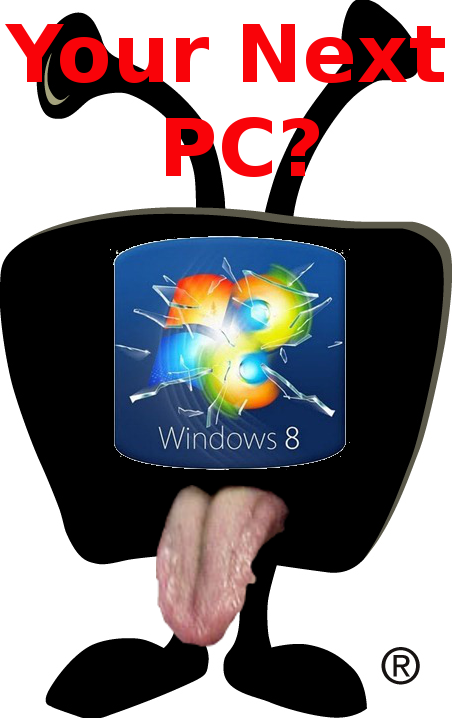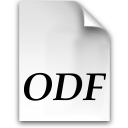12.14.11
Posted in News Roundup at 4:24 pm by Dr. Roy Schestowitz

Contents
-
Kernel Space
-
Graphics Stack
-
-
-
A thorough performance look at the Intel Core i7 3960X “Sandy Bridge” Extreme Edition processor will be published very soon, but in this article are some benchmarks of using Gallium3D’s LLVMpipe driver on this six-core processor with Hyper Threading.
-
AMD proudly announced last night, December 13th, the immediate availability for download of the AMD Catalyst 11.12 video driver for Linux platforms, brining initial support for the Red Hat Enterprise Linux 6.2 operating system.
-
Applications
-
In the 2 former articles of this series we have saw OCSInventory and Fusion Inventory 2 software that can create an asset inventory with your computers hardware and software, they both work with agents on the remote machines that send the information on a central server, where you can see, manage and query these information.
-
-
There’s quite a lot of changes for FFmpg 0.9 since the 0.8 series. Among the changes is a native Dirac decoder, MMSH seeking support, support for reading MPO fils, a libass filter, FLB sample-rate change support, many ARM optimizations, libspeex encoding support, hardware accelerated H.264 decoding for Google Android, libswresample support, and much more. There’s also many bug-fixes as part of this new release.
-
-
I somehow never discovered the existence of Scribes until recently. I thought I had tried every word processor and text editor that existed in Linux. But my experiences in using Scribes the last few weeks to enter research notes and create writing drafts has convinced me of its power and usefulness.
-
Instructionals/Technical
-
Games
-
The first thing I found interesting was that Kris is using the project funding platform Kickstarter.com to raise the funds for developing the game. The way I understand Kickstarter to work is a project idea is proposed, a donation goal is set, and if the goal is met within the time threshold, the project is successfully Kickstarted. People that donate to the project, known as “backers”, are given all types of incentives depending on the amount they donate. Check out the incentives for this project. Donations start at $1.
-
-
-
-
-
-
Desktop Environments
-
I am using XFCE as my Desktop Environment, and that includes XFWM – XFCE’s own window manager. I could have used another one, but I find XFWM to be quite good.
I did look briefly at what other WMs are out there, and what I pretty much ended with was that a Compositing window manager would be best (XFWM is one), and not just for fun visual effects. Actually, if that’s what you’re looking for Compiz might be what you want to give a try. But I’m not really looking for all those visual effects, and XFWM offered what I needed, so I didn’t see the need to look for anything else.
-
K Desktop Environment/KDE SC)
-
GNOME Desktop
-
Here’s the second to last batch of the 2011 GNOME User Survey feedback. The last dump of the GNOME feedback will come in the next day or two so that we can then move onto publishing the rest of the results of this survey for the other questions.
-
I first it tried with a beta version and spent less than 3 weeks total using it. I figured that it was beta and that the fact that the ‘shutdown’ option was missing and the configuration options missing were due to the unfinished state. Also the worst feature was the use flow, the steps needed to get anything done. Having to disrupt your work flow to go to the activities window and then go to applications to start an application was ridiculously cumbersome.
-
Light Themes Evolved initially started as an Ambiance theme modification for Nautilus Elementary. Later on, it became a full package that brings fixes and improvements to both Ambiance an and Radiance themes.
-
-
-
-
-
New Releases
-
-
· Announced Distro: Ultimate Edition 3.0
· Announced Distro: Red Hat Enterprise Linux 6.2
· Announced Distro: Chromium OS Lime 1404.0
· Announced Distro: CentOS 6.1
-
Red Hat Family
-
-
-
-
-
GlusterFS was introduced back in 2007, as an open source network-attached storage system that used Ethernet or InfiniBand RDMA to pool together multiple storage volumes into one colossal pool. It became a cloud storage system in 2009, meaning that it added the elasticity and self-service provisioning necessary to qualify for the official “cloud” moniker. And although it was designed for enterprises, that didn’t stop some very clever coders from reworking it into a locally-mountable cloud storage store, now called HekaFS.
-
While CentOS, Scientific Linux, and Oracle Linux Server are all derived from the same upstream source (Red Hat Enterprise Linux), how does the system performance compare between these RHEL derivatives? Here are some benchmarks of each of the 6.1 releases for Oracle Server, CentOS, and Scientific Linux, as they all do not perform the same.
-
Fedora
-
The security features in Fedora make it one of my favorite Linux distributions. And that is partly why it is in my list of the top 6 KDE distributions of 2011, even though it takes some tweaking to get it to the it just works state. I will take the security advantages of an operating system over any user-friendliness weaknesses, provided those user-friendliness weaknesses are not show stoppers.
-
Debian Family
-
The release of Java update 29 from Oracle marks not only security updates, but a change to the licensing, removing Debian’s ability to distribute the non-free JVM. The clause in the Java license under which we were able to distribute Java, the DLJ, has been removed. As a result, the sun-java6 package is no longer suitable for the archive, and has been removed, as documented in Debian Bug #646524 [2]. Sylvestre Ledru suggests [3] that sun-java6 installs be migrated to openjdk, the open-source alternative, using the following command:
apt-get –purge remove sun-java6-jre && apt-get install openjdk-7-jre
-
Derivatives
-
Canonical/Ubuntu
-
If Mark Shuttleworth has his way we will soon be seeing Ubuntu devices everywhere – from telephones to tablet PCs to desktops – and perhaps even on our televisions.
In a recent blog post, Ubuntu chief Shuttleworth listed some of the work being done towards creating Ubuntu TV. Although still in the early days of discussion with just a few mock-ups available, ambitions for Ubuntu TV are very much in line with Shuttleworth’s apparent new focus on “Ubuntu everywhere”.
-
-
-
-
Patrick Wright proudly announced a few days ago, on December 7th, that Canonical’s Platform QA Team have started to execute boot speed tests using the daily ISO build of the Ubuntu operating systems.
-
Flavours and Variants
-
The Pear OS 3.0 operating system has been released earlier today, being based on Ubuntu 11.10 (Oneiric Ocelot) and the GNOME 3 desktop environment.
-
-
Aldebaran Robotics have launched a new version of their popular robot Nao – Nao Next Gen. Nao is an autonomous, programmable, medium-sized humanoid robot running a custom Linux OS.
-
Phones
-
Android
-
Google announced on Monday that more than 10 million applications have been downloaded from Android market! To celebrate this milestone Android market is featuring 10 paid applications for 10 days at a cost of only 10cents! 4 days have already passed which means that there will be 60 more apps for 10cents! So you’d better check every day the 10 billion Apps page. On today’s deals you can find Talking Tom Cat 2, ADWLauncher EX and a few more games! I wonder what the next applications will be!
-
-
Rory Cellan-Jones has blogged about Google’s Android catching up with Apple in the year 2011, and the projection that it’s going to surpass the iOS app store’s number of downloads – which stands at 18 billion now – in the next few years.
-
Want to know if Carrier IQ, the dialer- and location-sniffing software installed in millions of phones, is being used by the FBI for law enforcement investigations? The FBI won’t reveal much about the controversial application. And why not? Because, the Bureau says, doing so might interfere with law enforcement investigations.
-
Advanced Micro Devices (AMD) is reportedly backing the Android-x86 open source project, which on Nov. 30 posted early Android 4.0 code for x86 processors, starting with AMD Brazos chips. Meanwhile, Intel — which signed a separate pact with Google to develop authorized Android-on-Atom ports, including an Android 4.0 release it now says is ready — is reportedly spurning the effort.
-
Logic PD announced a modular prototyping and demonstration platform for Android, showcasing the company’s customization and integration services as well as components from third-party partners. Aimed primarily at long life-cycle customers, the “Catalyst” platform is built around a seven-inch multitouch “proof-of-concept” device loaded with wireless radios, running Android 2.3 on TI’s DaVinci DM3730 Cortex-A8 processor.
-
Mathematically, if they treble cumulative downloads every year the progression will go like this:
* 2012 – 30 billion
* 2013 – 90billion
* 2014 – 270 billion
* 2015 – 810 billion
-
Sub-notebooks/Tablets
-
If you thought you’d lost hope in getting your hands on a $99 HP TouchPad, here’s your second chance- and probably your last. HP will be making available a batch of refurbished 16GB and 32GB TouchPads beginning December 11th at 6 p.m. Central Time through HP’s eBay Store. HP will also be bundling a case, charging dock, and wireless keyboard for $79, all of which will be available in the laptop section of the store.
HP has set a limit of 2 per customer and can only be purchased via PayPal. A 90-day warranty is all you’ll get on these puppies since they’re refurbished, so you’ll have to treat them nice. HP will be delaying the public announcement of the sale when it begins at 6 p.m., so that employee’s can get first dibs.
-
Ainol Electronics has begun shipping what it claims is the world’s first Android 4.0 (“Ice Cream Sandwich”) tablet. Now available in China for only $99, the Ainovo Novo7 comes with a MIPS-based, 1GHz Ingenic JZ4770 XBurst processor, seven-inch capacitive multitouch screen, dual cameras, an HDMI 1.3 port, a microSD slot — and a testimonial from Google’s Andy Rubin.
-
Stream TV Networks is shipping an upgraded version of its seven-inch eLocity Android tablet for $230. The eLocity A7+ is equipped with a “1.0-1.2GHz” Nvidia Tegra 2 processor, offers 4GB of internal storage, and improves the seven-inch capacitive screen to 1024 x 600 resolution — but aside from the much lower price is otherwise much the same, right down to its Android 2.2 operating system.
-
Verizon Wireless announced 4G LTE versions of Motorola Mobility’s Xoom 2 tablets, running Android 3.2 — and eventually Android 4.0 — on dual-core 1.2GHz processors. The Droid Xyboard 10.1 and Droid Xyboard 8.2 respectively offer 10.1- and 8.2-inch IPS (in-plane switching) displays plus on-contract prices of $530 and $430, and both include 4G LTE networking as well as five- and 1.3-megapixel cameras.
-
Fuhu announced it has begun shipping its “Nabi” Android tablet for kids, and says pre-order stock at Toysrus.com has already sold out. Running Android 2.2 on a dual-core 544MHz Cortex-A9 processor, the “Nabi” offers a seven-inch, capacitive 800 x 480 pixel screen, Wi-Fi, mini-HDMI, microSD, Wi-Fi, and Bluetooth 2.1.
-
-
BSD
-
-
-
The last minute push of unique tests continues as Arendal is stressed prior to its release. Here are some benchmarks comparing Oracle Linux Server 6.1 (their derivative of Red Hat Enterprise Linux 6.1) versus FreeBSD 9.0.
-
FSF/FSFE/GNU/SFLC
-
Project Releases
-
The libbluray project put out its first official release a few weeks ago. This open-source (GNU GPLv2) library is intended to support Blu-Ray disc playback by media players such as VLC and MPlayer.
The libbluray 0.21 release is the first from the project and it happened on the 30th of November. This release hasn’t been widely publicized and I just happened to know about it this morning from an indirectly-related message on another mailing list. This project was born out of the Doom9 community and has been under development since 2009.
-
-
Programming
-
Standards/Consortia
-
Security
-
-
Microsoft plans to deliver a festive hamper of 14 security updates next week, three of which are designed to tackle critical remote code execution flaws.
-
Civil Rights
-
Early next year the government will introduce lawful access legislation featuring new information disclosure requirements for Internet providers, the installation of mandated surveillance technologies, and creation of new police powers. Public Safety Minister Vic Toews, the chief proponent of the new law, has defended the plans, stating that opponents are putting “the rights of child pornographers and organized crime ahead of the rights of law-abiding citizens.”
-
ACTA
-
-
100 years after Amundsen reached the South Pole in the Antartics our European member states sent ACTA on a mission to benefit the South. No, kidding?
Sure, an Medicines Sans Frontiers representative once indicated ACTA may generate some serious effects on pharmaceutical supply for their emergency operations in the least developed nations and patients’ access to retroviral drugs etc. But these effect he argued would be rather negative.
Permalink
 Send this to a friend
Send this to a friend
Posted in GNU/Linux, Marketing, Microsoft, Novell, OpenSUSE at 10:43 am by Dr. Roy Schestowitz

Summary: A critical assessment of where SUSE stands at the end of 2011 and how this interacts with the release of OpenSUSE
THE past year has been good for GNU/Linux. On the server, for instance, it carried on gaining.
According to some figures, Red Hat keeps beating Microsoft Windows, Microsoft Linux (SUSE), and Solaris. This is not especially surprising given the recent results and upgrade of Red Hat (c/f our daily links). SUSE can see the growth of GNU/Linux, but it cannot quite steal Red Hat’s thunder, not even with Microsoft’s assistance. From the news: “Even as the Linux Foundation reports on Linux jobs in the U.S., the global picture seems to be even more encouraging.”
Over in New Zealand, SUSE is looking to “re-open Linux conversation” — whatever that actually means. They cannot even get the name right. The news site says: “Suse has informed us the official pronunciation is written soo-sah – check out this YouTube video if you’re still not sure.”
At SUSE there used to be a lot of buzz over “IP peace of mind” (Microsoft FUD) and right now there is more and more of the Fog Computing (“cloud”) hype. We gave many examples over the past couple of years. Consider this new Q&A from Australia:
There are two types of Cloud — public and private, and there is also the hybrid Cloud that’s a combination of both. We’re already in the Cloud business. You can use SUSE through a number of public Cloud providers, and we use Telstra locally. We also work with IBM and Intel, Rackspace and we’ve got some more global announcements coming up shortly about this.
Joe Brockmeier, formerly of Novell/SUSE, also pumps in that type of hype:
SUSE announced its commitment to OpenStack in October, along with a development preview available via SUSE Studio. This includes the three major components in the Diablo release (Nova, Glance, and Keystone). Brauckmann wasn’t sure about specific contributions that SUSE would be making to OpenStack, but did say that the company plans to follow up with a second technology preview in Q2 of 2012. (The “Essex” release of OpenStack will come out in late Q1 if it sticks to schedule.)
At SUSE, it is no longer important to encourage software freedom; patents and decoupling one from his/her data is now a priority. On the purely proprietary side there is also IDM which Novell spreads to keep track of people. Novell’s account in YouTube promotes the proprietary Vibe [1, 2] (based on open source but proprietary) and some other proprietary software stuff that can be found in other new files like this one. The only thing which remained somewhat open is OpenSUSE, but this is a promotional move/tool for SLE*. The so-called ‘community’ is being approached for free artwork [1, 2] while others provide documentation and reviews. OpenSUSE is not unique, but this one review says: “when I read about some of the features in OpenSuse 12.1, I couldn’t resist giving it a try.”
All those features are available elsewhere. What YaST has should have equivalents elsewhere too. There is of course also the volunteer composition of weekly reports [1, 2], putting aside the OpenSUSE project site itself [1, 2] or those who took it for a spin for comparative purposes.
The bottom line is, SUSE lost to Red Hat and it is not promoting Open Source at all. OpenSUSE is being used to add the “open” angle to SUSE marketing. Nobody really needs either of those. Smart folks simply see what else is out there and let SUSE dry up inside Microsoft’s wallet. The boycott was not in vain, and it has been very effective. █
Permalink
 Send this to a friend
Send this to a friend
Posted in Europe, Patents at 10:30 am by Dr. Roy Schestowitz
Software patents. From the back door/stage.

Summary: A quick catchup with patent news, emphasis persisting on the situation in Europe
PATENT rants have become abundant and over the coming weeks we shall cover several that we missed over the past week or two (yours truly was absent).
Granting of software patents can be influenced by the proposed patent harmonisation in Europe and the “EPO can influence patent harmo[nisation] through translation, classification, PPH,” notes one person. This matter is especially sensitive because software patents in Europe are the bridge for US monopolists (including Apple and Microsoft) to take their abusive behaviour global, i.e. their embargo war becomes indisputable. In some cases even access to life-saving drugs is at stake.
Glyn Moody, a Brit, wrote about the danger earlier this month and pointed out that:
Aside from the general issue of transparency and accountability, there is also a more particular concern for readers of this blog. Despite the fact that in Europe patents may not be given for software “as such”, patents are being issued for software using a variety of legal tricks (mostly involving extremely dubious redefinition of key terms to avoid the ban on software patents.)
Just watch what happened in Germany where Apple tried to embargo Linux-powered tablets:
A German court has ruled in Motorola Mobility’s favour in a patents dispute with Apple.
The Android smartphone maker had complained that Apple failed to license one of its wireless intellectual properties.
As the FSFE’s Karsten Gerloff (in Germany) put it, there is a “Good summary of #Apple ban in Europe ur1.ca/6jiri (DE) Can we all agree now that #swpat are silly?”
In the United States, Apple cannot get its way all the time. Based on leaked documents, Apple is more vicious than its followers realise. To quote: “A person within Apple has leaked the company’s ‘Retail Blogging and Online Social Media Guidelines’ which explain that employees cannot use blogs, wikis, social networks, and similar online tools to communicate about their employer internally.” This means no complaining about Apple’s patent aggression presumably. What a lovely company, eh? In separate posts we are going to tackle what Microsoft is doing as well. Antitrust regulators get increasingly involved in what constitutes racketeering, proxy wars, and anti-competitive collusion. There are even those who say that “Patents violate the constitution in discouraging innovation”.
A more comprehensive coverage of the situation in Europe will be posted soon. Now is the time to fight back for elimination — not proliferation — of software patents all around the world. █
Permalink
 Send this to a friend
Send this to a friend
Posted in Microsoft at 10:16 am by Dr. Roy Schestowitz
Precision in targeting

Summary: Out-of-control machines (or otherwise vandals) from Microsoft Corporations target a Web site critical of Microsoft
A LOT of visitors come to this site having searched for or browsed for Comes vs Microsoft material. But there are other sites that host this type of material.
Slated.org, which famously hosts all the Comes vs Microsoft stash, has been hit by what seems like zombies from Microsoft. To use its own explanation:
Now, as regular readers will already know, Slated is a site dedicated to GNU/Linux, Free Software, Free Standards, civil and human rights, business ethics, altruism and, generally, the cause of social liberalism. This upsets certain types of people and companies, no doubt including Microsoft. So it doesn’t really surprise me when they attack Slated, although I find it rather disturbing that a global corporation like Microsoft should do it so openly.
Perhaps this “hack” is nothing more than yet another compromised Windows PC inside Microsoft’s Redmond HQ, or maybe it’s something more sinister, but either way someone or something on Microsoft’s network just attacked Slated.
Good to know I have their full attention.
There were also DDOS attacks on other Microsoft-hostile sites. The botnets sometimes come from Microsoft. Claiming and also proving that there was malicious intent bringing those attacks from Microsoft is nearly impossible because of the structural nature of botnets, but it does need to be highlighted. We have already caught some pro-Microsoft trolls in blog comments who later turned out to be Microsoft employees. Novell did the same thing and so did SCO. It is not unusual. █
Permalink
 Send this to a friend
Send this to a friend
Posted in Deception, Microsoft at 10:00 am by Dr. Roy Schestowitz

Summary: Kaspersky is one of the latest members of the BSA to leave and IDC dares not to shower Windows with the usual paid-for compliments
LAST year we saw the BSA losing some key members after it had gotten worse than terrible. Techrights made it into some mainstream news sites for breaking this story at the time.
The BSA recently fronted and promoted SOPA, which led to yet more of an exodus. Can the BSA become defunct like other Microsoft front groups, let’s say within a decade? We shall wait and see. What we already find in the news is that FUD spreader Al Gillen and his colleagues lose blind faith in Windows as IDC expresses concerns about Vista 8. How times have changed… █
Permalink
 Send this to a friend
Send this to a friend
Posted in News Roundup at 3:59 am by Dr. Roy Schestowitz

Contents
-
I tossed Windows into the snow bank several years ago. Elegant on the outside, but ugly on the inside. The world of Blue Screens of Death, malware and viruses were really beginning to tick me off. I sought salvation in Linux. Over time I have flirted with several species of Linux. And like many people Ubuntu has become my weapon of choice. I gave up ‘geekery’ a while ago, I just want tools that I can use. Simple tools, a glorified IBM Selectric typewriter, email, and a Web Browser, and pretty much I am a happy guy.
-
GNU/Linux will arrive on retail shelves everywhere in every format. This is inevitable and we saw a few more devices available in 2011. 2012 will open the floodgates. M$ blinked by going to ARM. The world noticed and GNU/Linux will be able to rush in through the opened door. Retailers and OEMs will take the opportunity to make more money selling products running on FLOSS. The x86 OEMs are hungry and wanting to feed at the same trough the ARMed OEMs have been feeding at, both Android/Linux and GNU/Linux.
-
A federal judge has dismissed all of the counts brought against Sony in a class action suit over the disabling of PlayStation 3′s “Other OS” feature last year.
The feature was primarily used to install versions of the open source Linux operating system on the console, allowing home users to tap into the PlayStation 3 for homemade applications.
In April 2010, Sony released a PS3 firmware upgrade removing the console’s Other OS functions as a response to hacker exploits enabling users to run unauthorized software and pirated games by using the feature.
-
The year was 2011. The world’s economy was still in the tank, the publishing industry was in full-on meltdown mode, the tablet was finally accepted, smartphones were catching up to PCs in power, Steve Jobs passed away, the Indianapolis Colts were running down the perfectly imperfect season, and Linux had some major ups and downs.
It’s been a strange, strange year that might well go down as one of “those” years in my book of books. It seemed for every step forward there was one or two steps backwards to be taken — no matter what your focus or industry. Naturally I only want to address Linux, this being an open source blog and all.
-
2011 is coming to its end. It is time to make final roundups and see what happened in our life in this year.
I have written about three greatest failures in Linux world 2011 just now.
Now let’s have a look at greatest successes in 2011 from my point of view.
-
-
There will continue to be discussions and debates about Linux on the desktop, including popularity, vitality, usability, commercial connections and more, which is good for users and vendors. However, based on trends in cloud, mobile and consumer computing, Linux should and will move to these areas, leaving its longstanding low use on the desktop as it is.
-
-
-
Whether you are a home user or a business owner, Linux is a great choice for an operating system. I entered the Linux world pretty recently, after spending a long time with various Microsoft Windows versions. Now, there’s no looking back!
-
-
Desktop
-
It’s not a zero-sum game. FLOSS doesn’t get used up somehow because it’s successful in the cloud, and mobile. FLOSS gets excited, drawing in new talent and more users sharing the joy. FLOSS is on fire and it will grow as long as there is fuel and oxygen.
-
-
Audiocasts/Shows
-
Kernel Space
-
Besides finishing up the Phoronix Test Suite 3.6-Arendal release this weekend, on Saturday I began running some new Intel CPU benchmarks. In building the Linux 3.1 kernel for x86_64 in a default configuration (make defconfig), I’ve now managed to trim down the compile time to less than sixty seconds on a single-socket desktop system. Similar speeds can be achieved out of multi-socket servers and other configurations, but this is the first time I’m seeing such kernel build speeds out of a single processor — the AMD FX-8150 Bulldozer doesn’t come close.
-
Graphics Stack
-
Patches have been published for Wayland today for an idle animation interface and implementation within its demo compositor. In other words, you can now have a working screensaver in Wayland.
-
While this package doesn’t mark the release of any new software, Intel defines the 2011Q4 graphics package as being the Linux 3.1 kernel, Mesa 7.112, xf86-video-intel 2.17.0, libdrm 2.4.27, libva 1.0.15, and vaapi-driver-intel 1.0.15. This is the configuration they recommend for Linux end-users and distributors. They tested these components against X.Org Server 1.11.1.
-
-
While AMD still hasn’t published Radeon HDMI audio patches for their open-source Linux driver to enable the audio support on their Radeon HD 5000 series and newer, the reverse-engineered community patches have quickly evolved.
-
-
Applications
-
Tonight something incredible happened: I asked Emacs to solve my physics homework and it couldn’t. If you think Emacs can do everything, think again: there is no (require ‘physics). Go solve assignments yourself.
-
-
In this article I’ll do a roundup over a collection of software that can be very useful for all people who have the hobby of photography.
They can be really useful if you have a collection of photo and you want to organize them in albums, by date or tags.
-
-
-
-
Totem’s new Vegas browser plugin provides you with a way to watch Flash based videos, without using Flash, using libquvi’s growing collection of supported sites.
-
-
-
-
Boot one of over a hundred Linux distros from a USB disk. With Live USB, software you can run on both Windows and Linux computers, it only takes a couple of clicks to make your USB disk a bootable Linux disk. The live CD just might be the most useful tool in any geek’s arsenal – we’ve pointed out 50 uses for live CDs in the past and plan on showing you many more. As time goes on, however, CD drives become less common. That’s why booting from a USB drive is useful: it works on notebooks and other devices without optical drives.
-
CAD or Computer Aided Drawing is now a predominant force in any form of industry that involves extensive use of design modelling or prototyping of graphical architectural depictions. Here is a list of some of the most popular CAD apps available for Ubuntu.Linux.
-
-
-
Bisigi Project has released 15 well designed and beautiful GTK2 themes. However, the project was concluded recently after the team announced that there will be no support for GTK3.
-
-
Instructionals/Technical
-
Wine
-
The Wine development release 1.3.34 is now available.
What’s new in this release:
* Bytecode support in JavaScript.
* Support for gradients in the DIB engine.
* A number of Uniscribe improvements.
* Fixes for DirectDraw mode switching.
* A few more MSVC runtime functions.
* Various bug fixes.
-
Games
-
I don’t know anything about video game development, so I am hoping that this project succeeds so that he releases the full game source code. I don’t want to give all of the details here, so I encourage to watch his video explanation. If you like his proposal, offer him a donation.
-
-
-
In a recent post, Gaslamp games revealed new screens and trailer of ‘Realm of the Diggle Gods’, a new expansion pack for Dungeons of Dredmor.
-
-
-
-
-
-
-
-
-
-
-
-
-
For anyone wondering whether the Mesa/Gallium3D drivers will work with the Humble Introversion Bundle titles (or are thinking about buying the collection at the last minute), here are the results from some quick tests using different hardware and drivers.
-
-
One of the biggest complaints I’ve heard from people about Linux is its lack of support for any decent games. I’d like to illustrate today how woefully wrong this myth is. I’ve been using Linux on my personal system for over four years now, and have picked out a number of fantastic games that have full Linux support, done by big name studios.
I’ll start out with three big FOSS games, because I’m all about the free.
-
-
Desktop Environments
-
e17 Impressions
* Appears to take very few resources, which appeals to my GUI minimalist mind.
* Seems a bit rough around the edges in a few places.
o Auto-hide of the shelves stops working sometimes. Have to open the settings dialog for a shelf and save it again to “fix” this.
o At times the Taskbar gadget running in a shelf mishandles / overlaps / truncates the items that it shows running on a desktop. Opening the shelf settings dialog and saving again “fixes” this.
-
K Desktop Environment/KDE SC)
-
Yes, KMail is maintained, It even has a new maintainer since a few months. Laurent Montel now takes care of KMail2 and already made an awesome work.
-
The digiKam development team has released version 2.4.0 of its open source digital photo management application for KDE. According to the developers, the maintenance update introduces improvements to the histogram view in the right sidebar aimed at making it easier for users to analyse their images.
-
We’ve already touched upon some of the best plasma widgets that are out there for KDE. While those may be enough to make your GNOME-loving friends jealous, it sounds much more fun when you get to brag about them on social media and IM. And, even though there are many apps that let you do that, nothing beats updating your social networks right from your main desktop. So, if you’re looking to add a social twist to KDE, read on as we list some social plasma widgets ( or plasmoids ) you can fill your desktop with.
-
-
So what is KIO? It is a technology that makes arbitrary resources available in form of files (if it makes sense to be files) which any KDE application can seamlessly access and use. Let’s have FTP server as an example. It’s a remote server somewhere on the other side of the country. How would you normally access it? Install some FTP client, create new connection, enter your credentials, connect, browse the server in the client, do some work. With KDE KIO all this is not needed.
-
GNOME Desktop
-
So to no one’s surprise, I made the switch to OpenSUSE 12.1 on my main laptop, a Lenovo T420i.
The main reason? I fell in love with GNOME shell. Sabayon LXDE was nice, but tiny things kept creeping up, like clamz not working to unpack Amazon music. It was nothing that impacted the usability of the machine, but it was just enough to make me open to switching distros.
-
Among the users of desktop environments, I’m probably not a typical user. In 2009 my setup drifted from a more or less standard GNOME 2.3 to a combination of GNOME and a tiling window manager, which I called Gnomad, as a logical continuation of something I’ve done for a long time since using computers: Simplifying tasks, which are not my main business.
-
Gnome 3 extensions have breathed a new life in those disgruntled Ubuntu users who were looking elsewhere due to the lack of customisation of Unity.
-
-
Good day, people who visit my site! It is with great pleasure that I invite you to yet another pleasant reading break. The theme? As always, my latest visit into the open source awesomeness that is GNU/Linux. I discovered Semplice while reading Distrowatch’s Weekly and I was drawn by its purple background. Yep, I am not ashamed to admit it! Staaaaart wearing purple, wearing purpleee. And it’s not even Ubuntu’s kind of purple, it’s the cool purple, lilla, mauve even. Yes, I like mauve. Let’s call it mauve. Mauve Linux. Mauve OS. Score!
-
If you have been wanting to dabble with Arch Linux but don’t want to jump directly into this leading rolling-release Linux distribution, you may want to give KahelOS a shot.
-
Puppy Linux Puppy Linux is a fascinating little distribution which regularly thinks outside the box. The little Linux distro, which typically finds a home on low-end hardware, tries to strike a balance between being small and being complete, being efficient and being user-friendly. There are many different flavours of Puppy Linux and it’s a flexible distribution, able to take on many roles, which has endeared it to a large community. This week I decided to take the latest version, Puppy Linux 5.3 “Slacko”, for a test run.
-
gOS was a green-coloured Ubuntu-based Linux distribution that made a splash during early 2008 when it became the default OS on a line of PCs, laptops and netbooks from computer manufacturer Everex. Much of the lesser-known gOS hardware was exclusive to the American Walmart chain – such as its ‘mac mini’ style gPC.
-
Before we get ahead of ourselves — and I get flamed for spreading FUD — let’s state the obvious: Linux still can be plenty friendly to old or otherwise “slow” computers. The Damn Small Linux distribution, for example, can be installed in full on as little as 50MB of disk space, and run perfectly well on a 486 processor — with a graphical user interface. It’s not the Linux kernel that’s become resource-hungry, but the distributions that are built on top of it.
-
The Internet is a great place to scratch the itch of curiosity. I’d heard some interesting things about Arch Linux so I Googled it. I wanted to know what the Distro was all about and a bit of it’s history.
I accidentally discovered The GNU/Linux Distribution Timeline which informed me where Arch Linux was derived from (Crux) and what had branched off from it (7 current branches)
It charted the Galaxy of GNU/Linux Distributions. Organized the mess that Linux Distros have become into an understandable chart. A huge svg graphic measuring 2,120 x 8,330 pixels
A chart that is very detailed. Remember that Distro of Linux meant to be a replacement for Windows, “Lindows”, that first appeared in 2001? It had it’s security dumbed down to about the Windows 95 level.
-
PCLinuxOS/Mageia/Mandrake/Mandriva Family
-
Mandriva 2011 is a very decent and innovating Linux distribution but is sadly let down by a few fixable quirks. The biggest show stopper occurs when trying to update Mandriva 2011 for the first time. Unfortunately many newbies are struggling with this pain in the backside so let me tell you what to do in easy to follow steps.
-
Red Hat Family
-
Don’t think of Red Hat (RHT) as a Linux company, an open source company or an operating system vendor. Think of it as a cloud software leader.
If you want to build a reliable cloud, one that can hold your enterprise applications, you are probably doing business with Red Hat, and will only do more in the future.
-
-
-
Fedora
-
HP is hoping to model the WebOS open source government model after Red Hat’s Fedora project. Apache, CDDL and MPL are license possibilities.
-
-
As you may have seen if you are on the fedora announce list, we had an outage the other day of our main build system NFS storage. This meant that no builds could be made and also data could not be downloaded from koji (rpms, build info, etc). I thought I would share here what happened so we can learn from and try and prevent or mitigate this happening again.
-
There was a FESCo (Fedora Engineering Steering Committee) meeting held today where several new features were approved for the Fedora 17 feature list.
The features that were approved today for Fedora 17, which is codenamed the Beefy Miracle, include:
-
Debian Family
-
This time we bring you an interview with Michael Hanke and Yaroslav O. Halchenko, leaders of the NeuroDebian project. NeuroDebian is a turnkey platform (using Debian as its foundation) that offers a huge bundle of FLOSS software for neuroscientists. Enjoy the interview!
-
Ben Hutchings is a rather unassuming guy… but hiding behind his hat, there’s a real kernel hacker who backports new drivers for the kernel in Debian stable so that our flagship release supports very recent hardware.
Read on to learn more about Ben and the kernel team’s projects for Debian Wheezy!
-
The Debian security team, through Moritz Muehlenhoff, announced on December 6th that the Debian 5.0 (Lenny) operating system will no longer be supported started with February 6th, 2012.
-
Derivatives
-
Canonical/Ubuntu
-
-
-
-
Ubuntu being an Open Source OS is a perfect place for developers worldwide to showcase their skills. Deriving contributions from millions of programmers worldwide, Ubuntu is rich in features and is loaded with apps that will perform any task. In fact you don’t have to worry about compatibility issues as those existing in premium operating systems. So let us take a close peek into the world of Ubuntu and list down some of the hottest apps that you must have on your Ubuntu PC.
-
In the following months we are going to invite inspiring artists to talk about their amazing work and the role that Ubuntu and free software cover, or could cover, in their creative lives.
Today I invited a special Ubuntu friend to talk about his journey in creative coding.
He is well known in the web community and he is recently blowing it away with cutting edge online real-time music videos using open web technologies.
The Canonical Design blog is happy to welcome Ricardo Cabello, aka Mr.doob.
-
With Mac OS X Lion on the prowl and Windows 8 just around the corner, now more than ever is the time for Linux to show it can keep up with the times.
-
-
In March I got tired of KDE4 and switched to XFCE which served me quite well during Ubuntu 11.04 ‘natty’ cycle. But then I had a feeling that it becomes more and more second citizen in Ubuntu world. All those transitions from GTK+2 to GTK+3 which made some applications look ugly etc.
-
We’ve said it before and we’ll say it again: Canonical may have all but given up the fight to ship Ubuntu on consumer PCs in the United States, at least for now, but it remains staunchly committed to forging strong relationships with hardware manufacturers. The company’s latest effort in this vein is a new Web portal catered to that group — which is also a significant example of how Canonical is reconfiguring the way people find information about Ubuntu. Read on for details.
-
The Ubuntu Technical Board met yesterday and they decided on the future of non-PAE Linux kernels within Ubuntu, a decision that affects 32-bit users on older hardware.
-
-
-
A couple of months ago, Mark Shuttleworth, Ubuntu’s benevolent dictator, announced on his blog that by 14.04 (April 2014), he plans to bring Ubuntu to tablets, mobiles, and TVs. The announcement was met with surprise, shock, and some criticism.
-
-
Sonia Ouarti from Canonical announced a couple of days ago, December 2nd, that the Ubuntu founder Mark Shuttleworth and devops expert Clint Byrum will hold a webinar about Juju, this Thursday, December 8th at 3pm GMT.
-
-
Flavours and Variants
-
Also sprach Dedoimedo: Linux Mint Lisa is the best Gnome 3 incarnation now, but that’s not something to be proud of. While the Mint developers are trying their best to deliver a consistent and friendly experience for years and pretty much succeeding, the last release is a setback. You’ve seen all this and more in my namesake review, just a few days back. This was done on an ancient T60p laptop.
-
Out of the box, Linux Mint 12, the latest edition of Linux Mint, a desktop Linux distribution based on Ubuntu Desktop, comes with a choice of two desktop environments – GNOME 3 with Mint GNOME Shell Extension (MGSE), and MATE, a fork of GNOME 2.
-
Well, it’s not exactly brand new, but I am taking my first real look at Ubuntu Studio 11.04 (based on Ubuntu “Natty Narwhal”). This is what we decided to put on our “guest” computer when Debian “Wheezy” proved not to be so easy, and it gives us an opportunity to step out of our rut and look at a new GNU/Linux distribution.
If you read my column a lot, you probably know I’m a long-term Debian loyalist. Or maybe I should say “lazy-ist”, because my loyalty to Debian is not so much a matter of ideology as a simple case of me not wanting to have to learn a new system. I like computer technology, but mostly because of what I can do with it, not for its own sake. So I tend to find one system I’m comfortable with, and stick with it — especially when it comes to the computer I use every day.
-
Is it melodramatic to say that Linux Mint 12 has been the most anticipated distribution of the year? Maybe, maybe not. Probably. But I was certainly looking forward to it: even more so when I learned about Mint’s proposed reworking of the GNOME Shell. So I installed the release candidate on three computers, and I have the final on two of them.
-
Finally! Ultimate Edition 3.0 is here, officially released today, December 6th, and based on the Linux Mint 11 (Katya) and Ubuntu 11.04 (Natty Narwhal) operating systems.
-
Linux Mint 12 is the latest edition of the popular Linux distribution. Not to be confused with Linux Mint Debian Edition (LMDE), the version of Linux Mint that is based on Debian, Linux Mint 12 is based on Ubuntu Desktop.
This release, code-named Lisa, comes with more desktop options than you would normally find on a Ubuntu-based distribution. That of course has much to do with the distribution’s developers attempt to find a compromise desktop for the mess that has become the GNOME line of desktop environments.
-
-
-
Two Player Home Arcade Game Controller
Does the thought of building your own retro arcade game seem a bit daunting?
-
Phones
-
Android
-
-
Fujitsu-Toshiba announced an Android 2.3 smartphone for Japan’s KDDI network that features IPX5/8 waterproofing, an ultra-thin 6.7mm (0.26 inch) profile, and a low, 3.7-ounce weight. Built around on a 1.4GHz Qualcomm Snapdragon processor, the Fujitsu Arrows-ES IS12F offers a five-megapixel camera, Wi-Fi, Bluetooth, GPS, infrared, NFC, and even a TV tuner.
-
Ever want to know exactly why it takes so long to push the latest Android operating system release to your phone? Motorola and Sony Ericsson attempted to explain it on Wednesday.
On Nov. 14, Google released the Android 4.0 “Ice Cream Sandwich” code base to the general public, including manufacturers, which immediately began implementing it into their phones.
-
The matter has been a unhealed wound for more than six months, but this week the problem that C|Net’s Download.Com website has been perpetrating leapt into high profile with a complaint from the developers of NMap and others. The download.com site is one of the oldest software download sites, running since the nineties to offer downloads of free-of-charge software of all kinds – shareware, trialware and other proprietary software with loss-leader business models as well as true open source software.
-
By 2013, experts estimate that e-mail users will send 507 billion messages every day. Currently, the average person receives about 419 e-mails per day, with a little less than half of them related to work.
When you add up the time it takes to read and manage all that e-mail, plus time spent instant messaging, reading and writing blogs, and viewing and creating Web content, it’s clear that digital communication is one of the primary uses for technology.
-
-
Events
-
Web Browsers
-
-
Chrome
-
Google Chrome offers more protection against online attacks than any other mainstream browser, according to an evaluation that compares exploit mitigations, malicious link detection, and other safety features offered in Chrome, Internet Explorer, and Firefox.
-
-
Mozilla
-
-
-
-
-
A couple of weeks ago, a blogger at ReadWriteWeb wrote about the demise of Mozilla and Firefox, claiming that the loss of market share and lack of availability on mobile devices — and the departure of Google sponsorship — could lead to Mozilla’s downfall.
-
Oracle/Java/LibreOffice
-
Competitive grammar checking would be a nice improvement for LibreOffice. Supported by FSF.hu Foundation, Hungary, I have made two sentence checking patches to the English and Hungarian dictionary extensions of LibreOffice, based on the Lightproof Python UNO environment: see the related issue, the description and the standalone extensions.
-
BM Lotus Symphony is a free Office Suite available on Windows, Mac and Linux. The project began in 2007 and is basically a modified version of Openoffice.org. Though active, it still uses Openoffice 3.0 as its base. The developers seem to be focusing on stability and have released 3 “fix-packs” for Symphony 3.0 last year instead of newer versions. After the Libreoffice/Openoffice split, Symphony will continue to be based on the “official” version of Openoffice maintained by Apache.
-
CMS
-
Big news! The world’s most visited art museum in the world is now using Drupal for its website: http://louvre.fr. Très cool!
-
FSF/FSFE/GNU/SFLC
-
We are happy to announce the new release of GNU Fdisk.
As reported in the previous release, the software has been rewritten from scratch with a new design. With this release we include a first backend.
-
The maybe last development release in the 2.7 series of GIMP has just been made available for testing purpose.
-
Project Releases
-
Licensing
-
Of late I’ve become the “build guy” in GNOME it seems. One thing I want to clear up is I do not actually care about building just because I think it’s fun or interesting in and of itself. No, the reason I care about building is because if software doesn’t build, then clearly it’s not being run. And if it’s not being run, then it’s not being tested. And if it’s not tested, then it will be crap. In other words, a competent build system is necessary for not producing crap (but not sufficient, obviously).
-
Openness/Sharing
-
Open Source Works, which is the CIA’s in-house open source analysis component, is devoted to intelligence analysis of unclassified, open source information. Oddly, however, the directive that established Open Source Works is classified, as is the charter of the organization. In fact, CIA says the very existence of any such records is a classified fact.
-
Open Data
-
As 2011 comes to an end, there are 28 international open data platforms in the open government community. By the end of 2012, code from new “Data.gov-in-a-box” may help many more countries to stand up their own platforms. A partnership between the United States and India on open government has borne fruit: progress on making the open data platform Data.gov open source.
-
Programming
-
It’s obvious that the MPAA has their greasy hands all over this decision, and there is probably little doubt that any licensing agreement between LoveFilms and the content owners was contingent upon them switching over to Silverlight.
-
Security
-
DRM
-
Chances are you’ve heard of music streaming service Spotify.
Permalink
 Send this to a friend
Send this to a friend
Posted in Antitrust, Microsoft, Vista 8 at 2:11 am by Guest Editorial Team
A Doomed Microsoft Again Spins Legal Compliance into Something it’s Not.

A Tivoized PC will look like an ugly TV.
The Windows press is doing damage control to quell a rising realization that the Microsoft demands and will have complete practical control of the next generation of Windows devices. Microsoft cleverly divulged key details over the past months to prevent people from understanding the implications. Free software advocates immediately understood the implications of signed code and some adopted a wait and see attitude believing OEMs would not be foolish enough to make all of their hardware Windows 8 logo compliant. Microsoft’s App Store rules made the intentions clear for Windows users, so Microsoft boosters are Open Washing the program to keep users from bolting. Boosters celebrate a Microsoft limited choice of free software and Microsoft’s cynical license compliance as a “Big win for Open Source.” Microsoft’s demands should trigger anti-trust investigation. Free software developers who still concern themselves with Windows should think carefully about the implications for their code. Windows users should migrate immediately because the PC ecosystem they grew up with is long gone.
A spokesman for Microsoft lead Business Insider to believe the revocation feature may only be for “Metro”
The Windows Store will be the exclusive distribution channel for apps that use the Windows 8 “Metro” interface, which is designed for tablets and smartphones, but will also contain some traditional desktop apps. Microsoft wouldn’t confirm if the kill switch applies only to Metro-style apps or if it covers any app in the store. “It’s really the early days yet,” said a spokesperson. “The terms of use applies to apps that people are creating now. More info will be shared as we get closer to release.”
Microsoft’s claim, of course, is ridiculous hair splitting. If Microsoft succeeds in Tivoizing all x86 and ARM hardware, only Microsoft signed code will run on Windows 8. Stopping any program from running will be as easy as revoking the keys no matter how they are installed.
Extreme Tech claims compliance terms in the App Store documentation are a “big win for Open Source.” The article is titled, “Windows 8 Store will allow open source apps, unlike iOS and Mac App Stores” and says:
There may be another win for the open source movement today, as there has been some interesting legalese found in the recent publication of the Windows Store Application Developer Agreement. … The section in question states that apps released under a license from the Open Source Initiative (GPL, Apache, etc.) can be distributed in the Windows Store. Further, it says that the OSI license will trump the Microsoft Standard Application License Terms, namely the the restriction on sharing applications.
The article offers some explanations that glorify Microsoft and belittle competitors but fail to make the common sense observation that Microsoft is forced to comply with the licenses used. They sink as low as to compare Microsoft’s long running patent extortion[2] to a friendly game of chess. Here’s another article that makes some of the same silly claims.
“Choice” and “Open” code are poor substitutes for software freedom and Tivoizing hardware defeats meaningful software freedom. Microsoft will be able to comfort their users with free software like browsers, image and audio editors. They will dutifully provide users with source code if the license requires as much but it is of no real value to the user because they can never run a modified version. The user gains none of the security, privacy or control of real software freedom from a single free program on top of a malicious OS. Users of Windows 8 will never have the tools to guard themselves.
Both articles are filled with Microsoft’s language about “security” and “legal” reasons for revocation of code. This is a smoke screen. The only security signed code provides is financial security for Microsoft from a lock out of competition.
In the past, I’ve often warned free software developers that porting to Windows is a waste of time and energy better spent making gnu/linux and other really free software better. It was easy enough to point to all of the companies Microsoft ruined by technical sabotage and ask people why they would bother with such an anti-social company. People who ignored that warning should be asking themselves some serious questions about what extra efforts they will now be forced to go through. What process will Microsoft demand for approval? Will a partial distribution be worthwhile? Can they trust Microsoft to distribute code free of modification beyond selection?
Microsoft’s attempt to Tivoize the computing world is far from assured. Vista and Windows 7 were both dismal failures [2] mostly because of Microsoft’s insane anti-competitive and digital restrictions plans. Windows 8 is more of the same with even less to offer the user. Plans to lock out competition by signed code is a sign of desperation born of complete failure to compete on merit. The only real question is how many of their partners they will ruin before they fail. Apple, IBM and Google each have more to offer those partners.
Permalink
 Send this to a friend
Send this to a friend
![]()






















 Content is available under CC-BY-SA
Content is available under CC-BY-SA